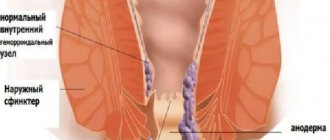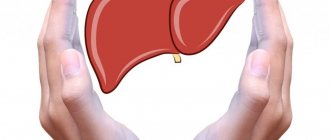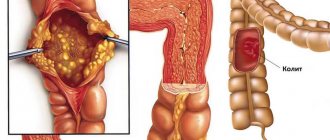Patients who want to cleanse the liver with sorbitol ask: how does the nutritional supplement work and what is included in the composition. How effectively it removes waste and toxins from the liver and the body as a whole. Judging by the reviews, the opinions of doctors and users are mixed. Surely, before carrying out the procedure, it is worth identifying the benefits and harms of using sorbitol. We must not forget that this is a medical drug, which means it has contraindications and can cause unpleasant consequences. How to safely cleanse the liver with sorbitol and what are the reviews about the procedure?
Pharmacodynamics and pharmacokinetics
The chemical formula of Sorbitol is C6H14O6.
Sorbitol - what is it?
As you know, Sorbitol is a substance also called glucite . It is a hexahydric alcohol with a sweetish taste and is registered as a food additive E420. The substance consists of small white crystals, quite hard, odorless, but has a pleasant taste and good solubility in water. At the same time, its sweetness is two times lower than that of regular sugar. In industry, sorbitol is obtained from corn starch.
An isotonic sorbitol solution is used when it is necessary to replenish the body with fluid. Its energy value is 4 kcal/g, which is the same as solutions of fructose and dextrose. The use of sorbitol does not increase glycemia and glucosuria . This solution is characterized by a choleretic and cholecystokinetic effect; taking higher dosages can inhibit the process of bile secretion and cause a laxative effect.
What is food sorbitol?
Food sorbitol is a natural sweetener, emulsifier, complexing agent, texturizer, and, as qualitative reactions show, a color stabilizer, moisture-retaining and dispersing agent.
This component is characterized by complete absorption and high nutritional value. It is believed that when consuming this substance, the body’s consumption of B vitamins – thiamine, pyridoxine a and biotin – . microflora , where these vitamins , was also noted . However, Sorbitol is not a carbohydrate, so it is recommended in the diet for people with diabetes . The properties of the substance are preserved during boiling and heat treatment.
Potassium Sorbitol – what is it?
Potassium sorbate or E-202 is the potassium salt of sorbic acid . It is a natural preservative that is actively used for food preservation. This substance is used to preserve fruits, vegetables, eggs and confectionery products, meat and fish, fruit and berry juices, soft drinks, and so on.
"Sorbitol": description, composition
“Sorbitol” is a drug whose active ingredient is the sugar substitute sobritol (chemical formula C6H14O6). Available in powder or solution form. They are packaged in vials, ampoules or bags. Additional components – low concentration alcohol solution or purified water.
The product should be stored in a dry, dark and cool place - in the refrigerator. Must be kept away from children. You should also avoid exposure to direct sunlight. The shelf life of the drug is 3 years.
Indications for use
The use of Sorbitol in medical practice has been noted for:
- shock, hypoglycemia, diabetes mellitus;
- chronic cholecystitis, biliary dyskinesia;
- chronic colitis accompanied by constipation.
In addition, this substance is actively used in everyday life, the food industry and cosmetology as a sugar substitute, preservative, hygroscopic agent, structure former, filler, and so on.
The benefits and harms of Sorbitol
As a rule, the benefits and harms of Sorbitol lie in its pronounced laxative effect, which can be increased or decreased depending on the substance taken.
A dose of 40-50 g can cause flatulence , and from 50 g - a strong laxative effect. Therefore, the substance is often used as a remedy for constipation.
However, taking high doses is accompanied by increased gas formation , stomach pain , diarrhea , irritable bowel syndrome and decreased fructose absorption. Excessive concentrations of the substance in the body can cause serious harm to the body, causing neuropathy or diabetic retinopathy.
Contraindications and side effects from the procedure
Tubage or blind probing with glucite cannot be performed in the following cases:
- cholelithiasis due to possible blockage of the bile ducts by large stones;
- diabetes;
- acute infectious diseases;
- pregnancy, lactation period;
- gastritis with high acidity;
- duodenal ulcer, otherwise irritation of the inner lining may occur with the release of liver secretions into the intestinal walls.
In most cases, patients tolerate such cleansing well, although negative effects are possible if the permissible doses are exceeded or if glucite is taken for a long time:
- violation of the mineral composition of the blood;
- spasmodic colic in the stomach;
- increased acidity;
- decreased tone and intestinal motility;
- frequent diarrhea if the dosage is exceeded;
- spasms of the peritoneal cavity;
- muscle weakness with prolonged use of sorbitol, which begins to provoke a decrease in salt levels in the body.
Instructions for use of Sorbitol (Method and dosage)
To take the substance in powder form, first dissolve it in warm water. The prepared solution is taken 1-2 times daily 5-10 minutes before eating. The duration of therapy can be 1-2.5 months.
The injection solution is administered intravenously. In this case, the rate of administration should not exceed 40-60 drops per minute. Duration of treatment is up to 10 days.
Use for liver cleansing
Sorbitol is characterized by a choleretic effect, so it is used for tubage - a washing procedure that allows you to cleanse the liver, kidneys, gallbladder and bile ducts.
As a result of this procedure, the secretion of bile is activated, which naturally clears the bile ducts. In general, tubing does not involve getting rid of stones; moreover, if they are present, this procedure is contraindicated.
A variety of products are used for tubage, but usually Sorbitol and rose hips.
Cleansing the liver with rose hips and Sorbitol is performed using a specially prepared infusion of these components. Dried berries must be thoroughly crushed, then steamed with boiling water in a thermos. Leave overnight. In the morning, add Sorbitol to the resulting infusion and drink it on an empty stomach.
At the same time, it is necessary to adhere to dietary nutrition, adequate drinking regimen and moderate physical activity. The difference from blind probing here is precisely that you need to move.
Such a procedure should cause loosening of the stool, so it is better to stay at home throughout the day. If cleansing is carried out for the first time, it is usually repeated 6 times every 3rd day. This method is then performed weekly.
It must be remembered that with this procedure, potassium and calcium may be washed out of the body. For this reason, you should first consult a specialist, as well as if unwanted side effects occur, such as nausea, weakness, dizziness and convulsions.
How to do blind probing with Sorbitol at home?
Blind probing of the gallbladder is performed to maximally open the bile ducts and achieve contraction of the gallbladder in order to drain stagnant bile. It is assumed that as a result of this procedure, fine sand can also be removed from the liver and biliary tract.
This procedure is carried out in the morning. You need to drink a glass of any choleretic agent, for example, warm mineral water without gas with the addition of Sorbitol or magnesia. After 20 minutes you need to drink the same liquid again.
You should also prepare a special mixture of: egg yolks and powdered sugar, olive or other vegetable oil with citrus juice, a glass of water and honey. Drink any of these mixtures, and after 15 minutes, mineral water again. After this, you need to go to bed and place a heating pad in the right hypochondrium for 1-1.5 hours.
It should be noted that the blind probing procedure is carried out sporadically and does not depend on periods of exacerbation.
Why cleanse the liver and is it possible?
The liver is the largest gland, an active participant in the synthesis of substances in the blood, and an important filter of the body. Every minute, up to 1.5 liters of blood passes through the organ, which contains not only nutritional components, but also poisons, toxins, and decay products. The liver bears the entire burden of cleansing the blood from harmful compounds, narcotic substances and disinfects the blood, promoting the accumulation of iron, fats, and glycogen.
Unfortunately, many provoking factors: poor environment, poor diet, bad habits have a negative impact on the body. Stagnation gradually forms and the liver begins to fail, reduces the rate of elimination and can no longer cope with the responsibilities assigned to it.
Sorbitol helps the organ maintain its correct functioning; cleaning with it is recognized as one of the best ways to remove stones, toxins and accumulations deposited during life. Cleansing with sorbitol is an effective, gentle method. It is easy to carry out at home in order to normalize the functioning of internal organs and accelerate the release of harmful accumulations to the outside.
A procedure called tubage can be indispensable for people suffering from:
- apathy, bad mood;
- excessive fatigue;
- constant pain in the liver area;
- bitterness in the mouth;
- yellowing of the whites of the eyes and skin.
Sorbitol as a diuretic removes all the dirt out, providing an antispasmodic, choleretic, laxative effect.
Analogs
Level 4 ATC code matches:
Romphalac
Transipeg
Normolakt
Medulak
Fortrans
Exportal
Fleet Phospho-Soda
Good luck
Lactulose
Duphalac
Normaze
Forlax
The main analogues are represented by the following substances: D-sorbitol, D-sorbitol, Sorbitol, Xylitol.
Possible side effects
In 70% of cases, cleaning at home takes place without side effects, while the rest experience various symptoms. Most often these are cramps in the abdominal cavity, severe weakness, weakness and aches throughout the body.
Intestinal upset is not a side effect, since this is a natural result of cleansing. Thanks to loose stools, the body naturally leaves substances that adversely affect the functionality of the gastrointestinal tract, kidneys, gallbladder, liver and pancreas.
Somewhat less often, patients experience chronic pathologies after cleansing, heartburn appears, and the acidity of gastric juice increases. If negative symptoms appear, it is better to stop using sorbitol so as not to worsen the situation. If symptoms last longer than 3 days, it is recommended to seek help from a medical professional.
Reviews of Sorbitol
This substance is actively used in various areas of life. However, it is especially often used to cleanse the liver. It should be noted that people often perform liver dubage with Sorbitol on their own, at home. Many of them consider this procedure the most necessary and carry it out several times a month.
As reviews show, liver cleansing with Sorbitol ends differently for all people and is not always good. If a person has liver disorders, then often tubing with Sorbitol and rose hips causes additional complications, for example, the movement of stones in the gall bladder, which can block the bile ducts.
As for people in good health, they usually adhere to the correct daily routine, diet and exercise, so they don’t even need liver replacement.
You can also find reviews online about Sorbitol for weight loss, which usually occurs due to the laxative effect of the substance. Taking this drug in high dosages often causes diarrhea. Of course, if the body remains in this state for some time, then weight will certainly begin to decrease, but due to dehydration of the body, which is very harmful for a person.
In addition, this remedy is attractive to people suffering from constipation. They are interested in how to take Sorbitol as a laxative to get a mild laxative effect. But, as you know, the problem of constipation should be solved in other ways. If this is not caused by a malnutrition, then perhaps the person has abnormalities in the functioning of the digestive system.
In any case, independent weight loss using medications, treatment of constipation and procedures that cleanse the body are allowed only under the supervision of specialists, preferably in a hospital setting. It is first necessary to undergo a full examination, which will identify existing violations and contraindications.
Getting ready for a liver cleanse
First of all, you need to prepare the intestines. Otherwise, if the toxic components of bile are thrown back into the liver under the influence of sorbitol, the person’s condition may sharply worsen. To prepare for the cleansing procedure you need to:
- give up alcohol 2-3 days before;
- include plant foods and apple juice in your diet, consuming in small portions;
- perform cleansing enemas daily at night.
On the day of the procedure, eat only apples in the morning. Vegetable soup, baked vegetables, and thin porridge with water are allowed before lunch. The main thing is that the stomach does not go hungry. Before the procedure itself, you should do an enema, take a relaxing bath with the addition of essential oils, herbal decoction, and sea salt.
Recommended video:
Sorbitol price, where to buy
The price of Sorbitol in solution varies between 50-80 rubles. You can buy the substance in powder at a pharmacy or store at a cost of 30 rubles.
- Online pharmacies in RussiaRussia
- Online pharmacies in UkraineUkraine
- Online pharmacies in KazakhstanKazakhstan
ZdravCity
- Sweetener powder Sorbitol Vitateka/Vitateka 500gSweet World LLC
324 rub.order
Pharmacy Dialogue
- Food sorbitol (500g)Sweet world
RUB 216 order
show more
Pharmacy24
- Sorbitol 125 g PP "Golden-Pharm", Ukraine
16 UAH. order - Sorbitol 500g sweetener Barvysta, Ukraine
58 UAH order
- Sorbitol 100g sweetener Barvysta, Ukraine
14 UAH order
- Sorbitol 250g sweetener Barvista, Ukraine
34 UAH order
PaniPharmacy
- Sorbitol 250g Ukraine, Zhitomirbioproduct
49 UAH order
- Sorbitol 500g box Ukraine, Ajanta
69 UAH order
- SORBITLE POWDER 250G Ukraine, Golden-Farm PE
30 UAH order
- Sorbitol 500g Ukraine, Zhitomirbioproduct
78 UAH order
- Sorbitol 250g box Ukraine, Ajanta
38 UAH order
show more
When does fat accumulate in the liver, and you don’t know? Unobvious risk factors
Few people go to the doctor feeling healthy. Many people don't go, even if they have symptoms. Therefore, fatty liver disease is most often detected by chance, during examination for other diseases.
Who should be careful? Those at risk for fatty liver disease are those who:
- They adhere to strict diets or have lost weight suddenly and quickly . The patient loses weight, enjoying achievements and reflection in the mirror, and the liver accumulates fat.
- They eat food high in fast carbohydrates and unhealthy fats - and the body needs more insulin, the pancreas produces it in excess, and insulin increases the accumulation of fat in the liver.
- They suffer from type 2 diabetes - again, due to the fact that there is a lot of insulin in this disease, it causes the liver to accumulate fat. And other hormonal disorders, for example, a lack of thyroid hormones, also affect the liver.
- They take medications for other reasons - for example, many contraceptives cause fatty liver. The “black list” includes some antibiotics, arrhythmia drugs, antitumor drugs and many other drugs.
From fatty liver to diabetes - one step
And yet, the “champions” in terms of liver risk are those who are obese. In this condition, more free fatty acids enter the liver and are stored in the liver cells as fat. Cells lose sensitivity to insulin, which becomes more and more abundant, a breakdown occurs, and diabetes develops.
Do you like to relax with a glass of alcohol? Fatty liver on the horizon
Alcohol is metabolized into fat, which is stored by liver cells. Then the cells become overfilled with fat, do not receive proper nutrition and die. This is also the cause of cirrhosis in those who “use.”
Products with high sorbitol
Sorbitol occurs naturally in significant quantities in grapes, prunes, cherries, peaches, apples, pears, apricots and juicy fruit juices.
The additive can be semi-artificially obtained from glucose syrup, or can be extracted from wheat or potato starch. Used as a low-calorie sweetener, humectant, filler, texturizer, or fat replacer in confectionery, candy, baked goods, diabetic jams, nutrition bars, shredded coconut, chewing gum, chocolate, diet soft drinks, surimi, or cooked sausages. E420 can be used as a sweetener in toothpaste, mouthwash, medicinal syrups, lozenges, vitamin and mineral supplements, or medications.
In the European Union, sorbitol is designated as E-number E420.











